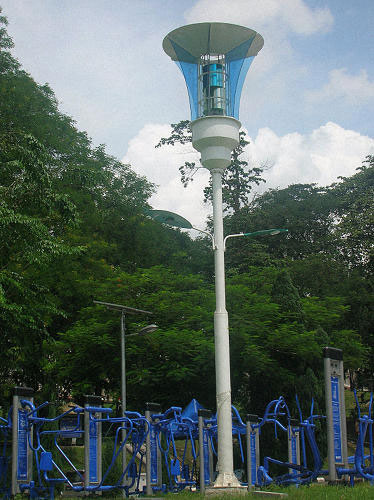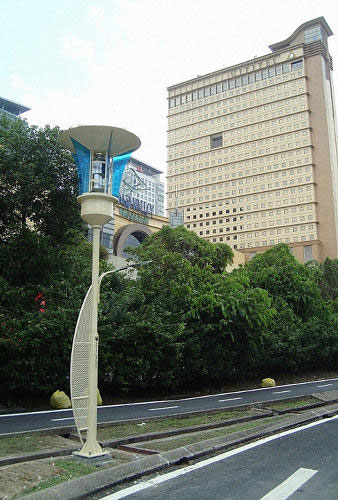It is clear that the electronic devices are becoming more efficient with each passing day. After the 3D printer, these smart streetlight will light up the streets. Fueled by the Solar energy, these incredible Southeast Asian streetlights could well improve the quality of life of many people. They kill mosquitoes (major propagators of viruses), recharge your phone and alert in case of flooding.
This is not the first time that these new functionalities have been added to the street lights. In Los Angeles some street lights are used as the Wi-Fi repeaters. Street lights in Jerusalem have been designed in the shape of flowers for the purely aesthetic purposes. The street lamps Glasgow can measure the air pollution and noise. However, this is the first time that the street lamps use the renewable energy to ensure the comfort and protection of residents.
This lamp model was designed specifically for the countries of Southeast Asia. University researchers in Malaysia created this technological marvel with the ambition that it replaces all conventional street lights in the area. Or at least, “in areas that have enough wind and solar energy,” says Professor Won Tong. The goal is to improve the lives of people who suffer from regular flooding and the massive presence of mosquitoes.
Top of the lamppost, there are solar panels, small wind turbines, and a small box that trap mosquitoes. By combining UV light and titanium dioxide , the box in question produces a small amount of CO2, giving it a human breath odor that mosquitoes love. Once mosquitoes are attracted, a fan sucks and kills. This could help in the fight against dengue, a disease transmitted by mosquitoes that killed about 200 people in Malaysia in 2015 .

The lamp can also measure the height of the water during floods, and send reports and alerts through an antenna. All electronic devices are placed on top, and the rest of the lamp is waterproof, allowing it to operate even in the case of flooding.
Finally, in case of power failure, people can charge their phone for free. Eight of these models are already installed at the campus of the University of Malaysia, as part of a pilot project. The next step for researchers will be to market it.

These technological advances are part of an ecological process that should gradually redefine our lifestyles. Do you think these innovations would have a positive impact on the lives of human beings.

